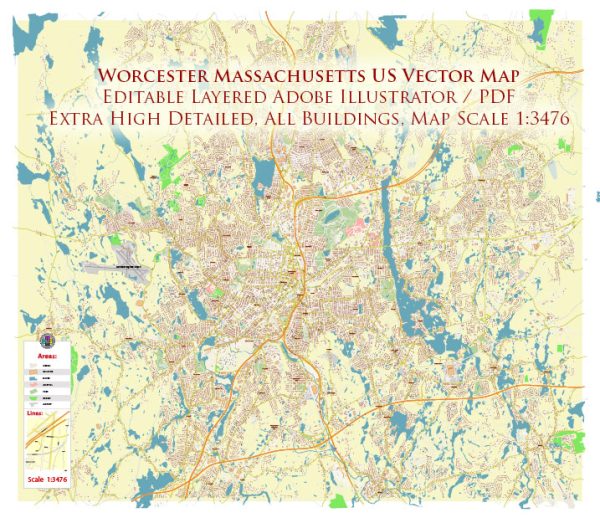Worcester, Massachusetts, has a rich history of urban development that reflects the broader trends and challenges faced by many American cities. Here is an overview of Worcester’s urban development history:
- Early Settlement and Industrialization (17th-19th centuries):
- Worcester was first settled in 1673 and officially incorporated as a town in 1722. Its location along the Blackstone River made it an ideal spot for water-powered mills, and by the early 19th century, Worcester became a center for manufacturing and industry.
- The construction of the Blackstone Canal in the 1820s further facilitated industrial growth by providing a transportation route for goods.
- Railroad Expansion and Economic Growth (19th century):
- The arrival of the Worcester and Boston Railroad in 1835 boosted the city’s connectivity and stimulated economic development. Worcester’s strategic location as a transportation hub contributed to its industrial and commercial success.
- Immigration and Population Growth (late 19th-early 20th centuries):
- The late 19th and early 20th centuries saw a significant influx of immigrants, particularly from Ireland, Italy, and Eastern Europe. This demographic shift influenced the city’s cultural landscape and contributed to its urbanization.
- Urbanization and Infrastructure Development (late 19th-early 20th centuries):
- Worcester experienced significant urbanization during this period. Infrastructure developments, such as the expansion of streetcar lines and the establishment of public utilities, played a crucial role in shaping the city’s physical layout.
- Post-World War II Changes (mid-20th century):
- Like many other American cities, Worcester faced challenges associated with suburbanization in the mid-20th century. The availability of automobiles and improved transportation infrastructure led to population shifts to the suburbs, and this had implications for the city’s development.
- Urban Renewal and Redevelopment (mid-20th century):
- In the mid-20th century, Worcester, like many cities, experienced urban renewal efforts aimed at addressing blight and outdated infrastructure. Some historic structures were demolished, and new developments were introduced. However, these efforts were not always without controversy, and some communities were negatively impacted.
- Recent Revitalization Efforts (late 20th century-present):
- In recent decades, Worcester has undertaken efforts to revitalize its downtown area and improve public spaces. Investments in cultural institutions, such as the Worcester Art Museum and the Hanover Theatre, have contributed to the city’s cultural vibrancy. The development of the Worcester Common and the DCU Center has also played a role in the city’s ongoing revitalization.
- Education and Healthcare Hub:
- Worcester is known for being a major center for education and healthcare, with institutions like Worcester Polytechnic Institute (WPI) and the University of Massachusetts Medical School. This has influenced the city’s development and contributed to a diverse and knowledge-based economy.
In summary, Worcester’s urban development has been shaped by its industrial heritage, transportation infrastructure, demographic changes, and efforts to adapt to the challenges of the 20th and 21st centuries. Like many cities, Worcester continues to evolve, balancing preservation of its historical character with the need for modernization and revitalization.


 Author: Kirill Shrayber, Ph.D.
Author: Kirill Shrayber, Ph.D.